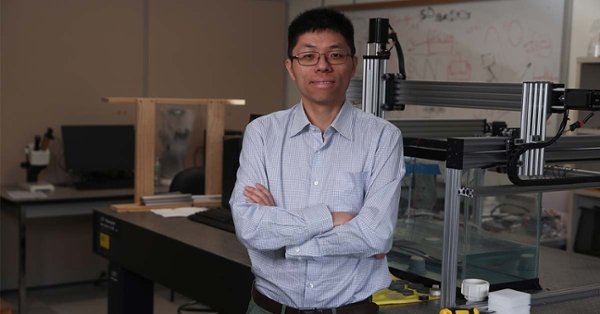NSF CAREER Award: Laying the groundwork for more functional electrical sensors
NSF CAREER Award: Laying the groundwork for more functional electrical sensors

High-frequency vibrations known as surface acoustic waves (SAWs) travel on the surface of solids or materials. They can transmit electrical signals using devices called SAW filters, which are widely found in smartphones and tablets. They can also be used in sensors, as SAWs are sensitive to foreign material and environmental conditions, such as humidity.
When these sound waves travel over certain piezoelectric materials, they generate an electrical charge. One Rowan researcher will study methods of manipulating such interactions in electronic devices to broaden their functionality.
Chen Shen, Ph.D., an assistant professor of mechanical engineering in the Henry M. Rowan College of Engineering, received support for the $500,000, five-year project with the National Science Foundation’s Faculty Early Career Development Program (CAREER) Award.
The NSF CAREER program offers the federal agency’s most prestigious awards in support of early-career faculty serving as academic role models in research and education. Faculty honored with the award are recognized for their potential as outstanding leaders in their field of research.
“What we are trying to do is investigate the mechanisms for electrical tuning,” Shen said. “We will also study how to come up with components that enable broader functionality, as well as improve the performance of existing SAW devices.”
Chen and his team will utilize the method of electrical tuning in which a small electrical voltage is applied to control the propagation of SAWs. This allows SAW sensors to be integrated with other sensors or electrical components.
Preliminary results showed that small amounts of electrical voltage can control the propagation of SAWs. Now, Shen hopes to design more integrated devices.
“This will have broad implications in, for example, communication, sensing and biomedical devices where surface acoustic waves are used as the primary platform,” Shen said.
Chen will be assisted by both graduate and undergraduate students.